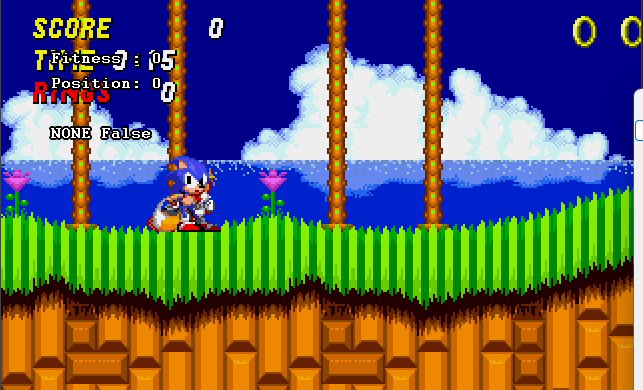Reinforcement Learning with Python for Video Games

View the code on Github!
Introduction
This project is heavily inspired by a series of videos (by user SethBling) about reinforcement learning for a few Mario games. I've really wanted to get into doing something similar, so this is my first attempt at that.
--Lua code to get the camera position and display everything on screen
--#region main
while true do
position = mainmemory.read_u16_be(0xEE00)
--only update fitness when we get further than previous
if position > fitness then
updateFitness()
end
--gui text for reading information
gui.text(50, 150, 'Position ' .. tostring(position))
gui.text(50, 200, 'Fitness ' .. tostring(fitness))
--make emulator go to next frame (rather than waiting for script to end)
emu.frameadvance()
end
--#endregionInitially, the project was going to use the BizHawk emulator's Lua scripting features to interact with Python. However, this interaction with Python is much easier to do using C#, which the BizHawk emulator can also do using a custom .NET tool. Basic data is gathered directly from the game's memory.
//Slightly different C# code to get the camera's position from memory, drawing GUI elsewhere
public uint GetCameraPosition()
{
APIs.Memory.UseMemoryDomain(APIs.Memory.MainMemoryName); //position information stored in main RAM of game
APIs.Memory.SetBigEndian(true); //position information uses big Endian
return APIs.Memory.ReadU16(0xEE00);
}So far, I'm only just starting on the actual reinforcement learning part of the process. For now, I've got a C# tool that sends fitness (reward feedback) and position data to Python, while receiving game input back. This uses a simple websocket connection, which I had not written before, but was quite simple. Next, I will implement the basic training model (as well as getting visual data from Sonic 2 for training).
//Asynchronus Task to connect to the websocket server and send information
async Task<int> Connect()
{
using (var ws = new ClientWebSocket())
{
//connect
await ws.ConnectAsync(uri, CancellationToken.None);
//buffer stuff for receiving a message
var buffer = new byte[256];
var buffer_segment = new ArraySegment<byte>(buffer);
while (ws.State == WebSocketState.Open)
{
//send a message
await ws.SendAsync(messageBytes, WebSocketMessageType.Binary, true, CancellationToken.None);
WebSocketReceiveResult received = await ws.ReceiveAsync(buffer_segment, CancellationToken.None);
//get rid of extra bytes on message
byte[] receivedBytes = new byte[received.Count];
for(int i = 0; i < received.Count; i++)
{
receivedBytes[i] = buffer_segment.Array[i];
}
//convert resulting message to string
receivedMessage = Encoding.UTF8.GetString(receivedBytes);
buffer_segment = new ArraySegment<byte>(buffer);
}
}
return 0;
}